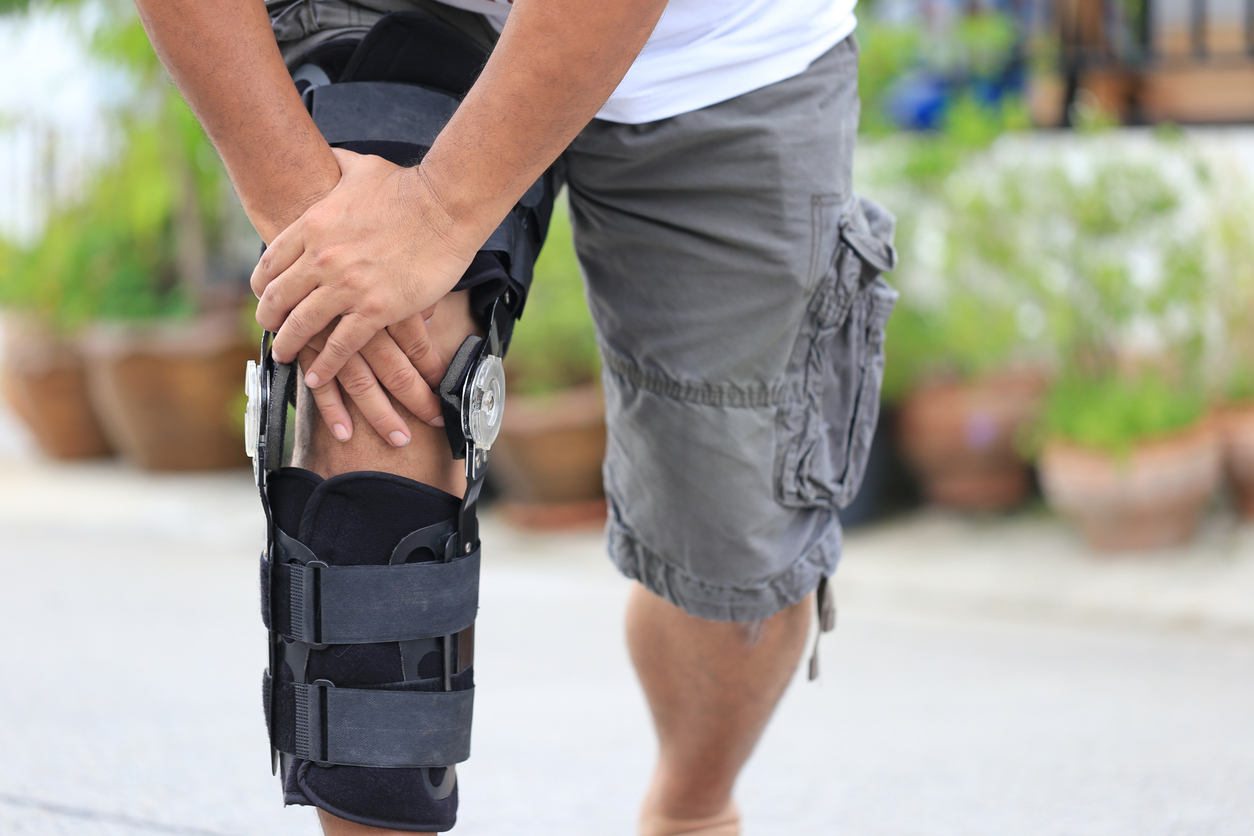2025-09-17
Valgus brace: effective but tolerable?
Geriatrics
By Ana Espino | Published on september 17, 2025 | 3 min read
#Osteoarthritis #Brace #Geriatrics
Medial femorotibial osteoarthritis, or medial knee osteoarthritis, is a common chronic condition characterized by cartilage degeneration associated with biomechanical imbalance of the knee, often worsened by varus alignment. This configuration leads to overload of the medial compartment, causing pain, functional limitations, and, in the long term, disability.
Among conservative treatments, the valgus knee brace aims to correct lower limb alignment and offload the medial compartment without resorting to surgery. However, its actual effectiveness and long-term tolerability remain controversial: available studies report variable results, often limited to biomechanical measurements, without considering patients’ lived experiences.
The key clinical challenge lies in balancing biomechanical effectiveness with everyday acceptability. This study was designed to assess both the functional and biomechanical effectiveness of the valgus brace, as well as users’ experiences, in order to better define the conditions for relevant and sustainable use in real-life practice.
The study was based on a randomized controlled trial including 62 patients with painful medial knee osteoarthritis, divided into two groups: brace group and control group without brace. Evaluation was carried out over 12 weeks, using a mixed-method design combining clinical measures (pain, function), biomechanical analysis (gait), and qualitative interviews (semi-structured).
Clinically, the brace group showed significant pain reduction and moderate functional improvement, measured by KOOS and NRS scores. Biomechanically, the brace significantly reduced knee adduction moment, confirming medial compartment unloading.
However, user experiences revealed highly heterogeneous adherence. While some reported rapid pain relief and improved mobility, others described discomfort while wearing the brace, difficulties in daily use (donning, clothing, discomfort), and in some cases device abandonment. Interindividual variability was marked, both in terms of benefit and tolerability.
Medial knee osteoarthritis is a painful degenerative condition, favored by poor joint alignment, for which effective conservative solutions remain limited. The main goal is to relieve pain while preserving joint function, without resorting prematurely to surgery. This study aimed to evaluate both the clinical and biomechanical effectiveness of a valgus brace, while exploring patients’ subjective experiences of daily use.
The results confirm pain reduction, moderate functional improvement, and mechanical unloading of the medial compartment, but also reveal highly variable tolerance depending on the individual. Nevertheless, limitations remain and justify further research. These include longer follow-up, larger sample sizes, analysis of differentiated response criteria, and evaluation of long-term benefits on osteoarthritis progression or surgical outcomes.
The development of more ergonomic braces and integration of this strategy into personalized care pathways could optimize usage and improve real-world adherence.
About the author – Ana Espino
As a scientific writer, Ana is passionate about bridging the gap between research and real-world impact. With expertise in immunology, virology, oncology, and clinical studies, she makes complex science clear and accessible. Her mission: to accelerate knowledge sharing and empower evidence-based decisions through impactful communication.
#Osteoarthritis #Brace #Geriatrics
Medial femorotibial osteoarthritis, or medial knee osteoarthritis, is a common chronic condition characterized by cartilage degeneration associated with biomechanical imbalance of the knee, often worsened by varus alignment. This configuration leads to overload of the medial compartment, causing pain, functional limitations, and, in the long term, disability.
Among conservative treatments, the valgus knee brace aims to correct lower limb alignment and offload the medial compartment without resorting to surgery. However, its actual effectiveness and long-term tolerability remain controversial: available studies report variable results, often limited to biomechanical measurements, without considering patients’ lived experiences.
The key clinical challenge lies in balancing biomechanical effectiveness with everyday acceptability. This study was designed to assess both the functional and biomechanical effectiveness of the valgus brace, as well as users’ experiences, in order to better define the conditions for relevant and sustainable use in real-life practice.
Relief without constraint: mission accomplished?
The study was based on a randomized controlled trial including 62 patients with painful medial knee osteoarthritis, divided into two groups: brace group and control group without brace. Evaluation was carried out over 12 weeks, using a mixed-method design combining clinical measures (pain, function), biomechanical analysis (gait), and qualitative interviews (semi-structured).
Clinically, the brace group showed significant pain reduction and moderate functional improvement, measured by KOOS and NRS scores. Biomechanically, the brace significantly reduced knee adduction moment, confirming medial compartment unloading.
However, user experiences revealed highly heterogeneous adherence. While some reported rapid pain relief and improved mobility, others described discomfort while wearing the brace, difficulties in daily use (donning, clothing, discomfort), and in some cases device abandonment. Interindividual variability was marked, both in terms of benefit and tolerability.
Between biomechanical effectiveness and everyday limitations
Medial knee osteoarthritis is a painful degenerative condition, favored by poor joint alignment, for which effective conservative solutions remain limited. The main goal is to relieve pain while preserving joint function, without resorting prematurely to surgery. This study aimed to evaluate both the clinical and biomechanical effectiveness of a valgus brace, while exploring patients’ subjective experiences of daily use.
The results confirm pain reduction, moderate functional improvement, and mechanical unloading of the medial compartment, but also reveal highly variable tolerance depending on the individual. Nevertheless, limitations remain and justify further research. These include longer follow-up, larger sample sizes, analysis of differentiated response criteria, and evaluation of long-term benefits on osteoarthritis progression or surgical outcomes.
The development of more ergonomic braces and integration of this strategy into personalized care pathways could optimize usage and improve real-world adherence.
Read next: APOE: the gene that makes you age faster… or slower?
About the author – Ana Espino
PhD in Immunology, specialized in Virology

Last press reviews
Turner syndrome and autoimmunity: an underestimated association?

By Ana Espino | Published on December 8, 2025 | 3 min read<br>
Could cinnamon become a natural treatment for metabolic syndrome?

By Lila Rouland | Published on December 5, 2025 | 3 min read<br><br>...
Who is afraid of Christmas? Do holidays trigger psychiatric crises?

By Carolina Lima | Published on Décember 4, 2025 | 3 min read